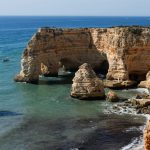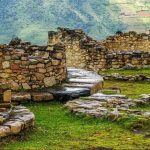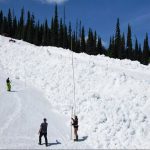Kuélap is an ancient marvel that predates Machu Picchu
Peru’s famed archeological site of Machu Picchu may be looked upon as a comparative kid when compared to the more northerly and lesser-known ruins of Kuelap.
Machu Picchu – frequently labeled the Lost City of the Incas – has become somewhat iconic in the Latin American country, frequently appearing in tourism promotions.
But Machu Picchu is believed to date back to the 15th century, whereas Kuélap – found at an even loftier setting than mountaintop Machu Picchu, may have seen human settlement as early as the 5th century and most of its structures were believed to have been built between 900 AD and 1100 AD, making Machu Picchu seem like something of a youngster archeology-wise. Area tour guide Henry Valiente concedes that Kuelap hasn’t yet fully achieved its place in the sun.
“The main draw in Peru is Machu Picchu,” he says of a tourist attraction that routinely appears in Peruvian tourism promotions.
But there’s no question that Kuélap – which sees far fewer visitors than Machu Picchu – has huge significance in archeological circles, he adds. “We call it the northern Machu Picchu. It’s an incredible site.”
Valiente sometimes dubs Kuélap the Peruvian Vatican because of the site’s religious significance.
The mountaintop retreat – found at over 3,000 meters above sea level – is now accessible by 20-minute gondola rides, eliminating the need for visitors to either reach it by long hikes or slow, winding vehicle trips, and visitors will see now-roofless stone structures in what was a fortified retreat made particularly secure because of its lofty setting. The site, built by the Chachapoyas culture and which has three entrances, saw the construction of over 400 circular dwellings, only to be abandoned after the Spanish Conquest of Peru.
“It’s incredible how they were living on top of the mountain with little access to water,” Valiente says of Kuélap’s original inhabitants.
Valiente notes that Inca influences can be found in northern Peru, with the Inca civilization extending well north of what is now Peru, and the region actually has many pre-Columbian archeological sites, although those sites don’t generate nearly as much attention as Machu Picchu does, with Valiente stating that the northern part of his homeland needs more attention.
“Every (archeology) site has something unique, something special,” he adds.
Among those who have visited Kuelap recently is Anas Rawa of Off the Map Travel in Kitchener, Ont., who toured it with “an attitude of discovery” and personally gave it the thumbs up while cautioning that the considerable walking needed to explore the site might make it somewhat challenging for those in poor physical condition.

















